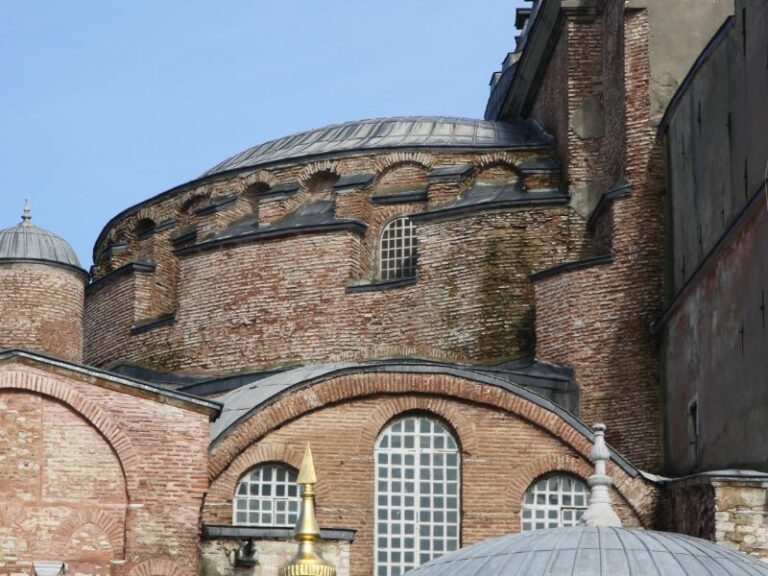Introduction
Located in the historic heart of Ephesus, Turkey, the Library of Celsus is a magnificent example of ancient Roman architectural brilliance and embodies the era’s profound desire for knowledge.
Erected in the early 2nd century AD, this extraordinary edifice is among the most iconic and best-preserved monuments of its period. Its importance goes beyond mere architectural elegance, symbolizing a center of learning and cultural enlightenment in the ancient world.
Historical Background
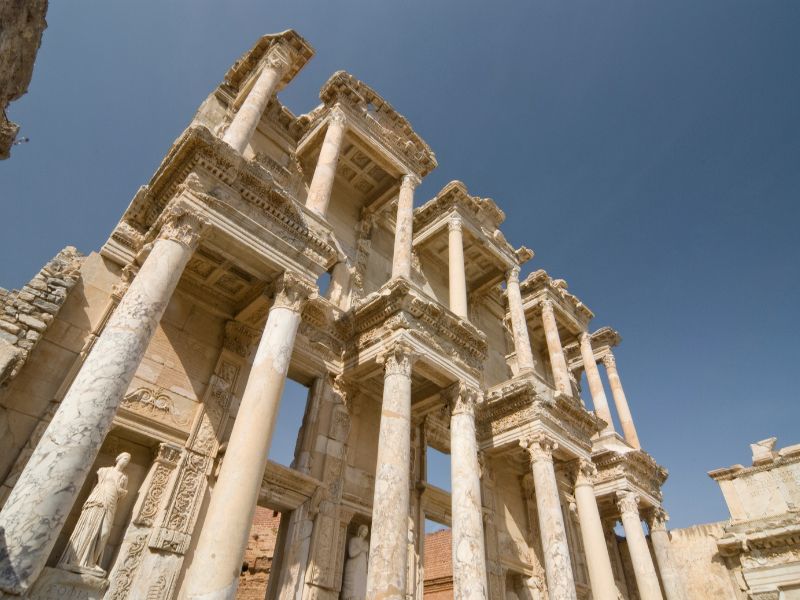
Construction and Patronage
The Library of Celsus was constructed between 114 and 117 AD, during the reign of Emperor Hadrian. It was commissioned by Tiberius Julius Aquila to honor his father, Tiberius Julius Celsus Polemaeanus, who was a Roman senator and the governor of the province of Asia.
Celsus financed the construction of the library using his considerable wealth, reflecting his dedication to education and culture.
A Monumental Tomb
Interestingly, the library also served as a monumental tomb for Celsus. His grave was interred beneath the ground floor, with a statue of Athena, the goddess of wisdom, positioned over it. This dual purpose of the library—both as a repository of knowledge and as a mausoleum—adds a layer of depth to its historical significance.
The Life and Legacy of Tiberius Julius Celsus Polemaeanus
Tiberius Julius Celsus Polemaeanus, a distinguished figure in Roman history, significantly impacted both the administrative and cultural arenas of his era. As a member of the Roman Senate, Celsus notably served as the proconsul of Ephesus between 105 and 107 CE and held the prestigious position of consul in Rome in 92 CE.
In this role, he was responsible for overseeing all public buildings. Beyond his political endeavors, Celsus was among the wealthiest entrepreneurs in Ephesus. Following his passing in 114 CE at the age of 70, his son, Tiberius Julius Aquila, honored his memory by initiating the construction of the Library of Celsus.
This project, completed by his heirs in 117 CE, served as both a tribute to one of Ephesus’ most illustrious figures and his final resting place. Celsus’ burial site, a lead coffin within a marble sarcophagus exquisitely decorated with high reliefs of Nike, Eros, rosettes, and garlands, was placed beneath the floor near the apsidal wall.
The library, embodying dual functions as a center for learning and a mausoleum, stands as a testament to the cultural and historical significance of Tiberius Julius Celsus Polemaeanus, forever immortalizing his legacy.
Architectural Marvel
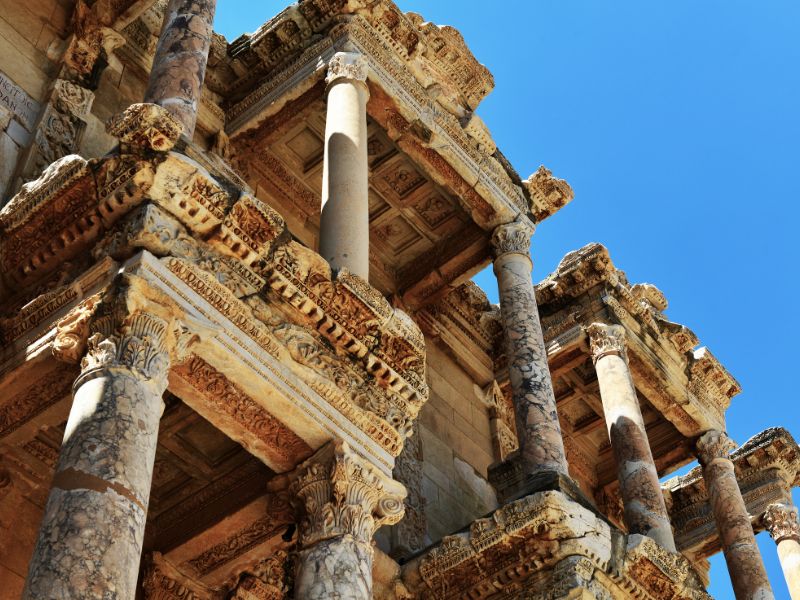
Design, Construction, and Location
The Library of Celsus, a masterpiece of Roman architecture designed by Vitruoya, stands as a prominent example of the architectural style that flourished during the reign of Emperor Hadrian (76-138 AD).
Located at the intersection of Curetes Street and Marble Road, near the grand entrance of the agora, it occupies a central position in the city.
This library, known for its highly decorative façades characteristic of Hadrian’s era, especially in the Eastern provinces, features a two-tiered façade with an array of projections, recessed false windows, columns, pediments, and statues, embodying the period’s architectural sophistication.
Structural Details and Decorative Elements
Resting on a nine-stepped podium that extends 21 meters (69 feet) in width, the library’s façade impresses with its ornate relief carvings and marble columns that blend Ionic and Corinthian orders.
The structure’s design cleverly employs optical illusions to appear more extensive than its actual dimensions, achieved through a gently convex podium and the strategic sizing of columns and capitals. The façade’s upper story houses slimmer columns supporting a mix of triangular and semicircular pediments, with large windows nestled between each column pair.
The interior, measuring 16.72 by 10.92 meters, offers about 180 square meters (2,000 square feet) of marble-paved floor space, with niches for approximately 12,000 scrolls intended for in-library consultation.
Functionality and Historical Significance
Beyond its architectural grandeur, the Library of Celsus was a beacon of knowledge and a testament to the value placed on the written word, closely intertwining with the rise of Christianity. Its design includes a unique climate control feature with empty niches within the walls to stabilize temperature and humidity, protecting the valuable texts.
Despite the façade suggesting a second floor, the library’s interior contained no such level but featured a railed balcony for accessing higher niches. At its heart stood a large alcove with a statue, likely of Celsus or his son, who not only commissioned the library but also endowed it with funds for scroll acquisition.
This statue is now housed in the Archaeological Museum of Istanbul, preserving the legacy of a structure that was as much a center of learning as it was an architectural marvel.
Symbolism of the Library of Celsus
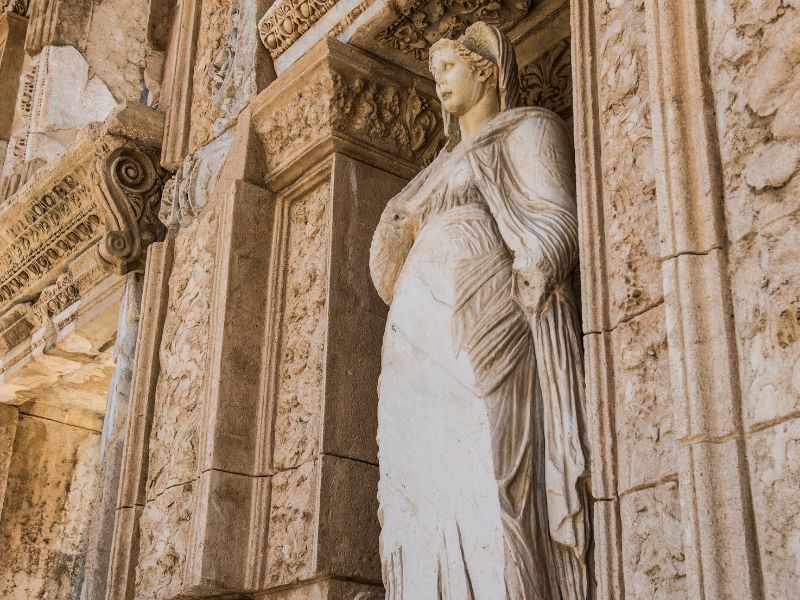
The Library of Celsus is replete with symbolism that extends beyond its architectural grandeur and dual function as a library and mausoleum. One of the most profound symbols embodied in this structure is the celebration of wisdom, knowledge, intelligence, and virtue, encapsulated by the statues that stood in the niches on its façade.
These representations were a deliberate nod to Tiberius Julius Celsus Polemaeanus, reflecting qualities that he was esteemed for during his lifetime. The emphasis on these virtues underscores the ancient Roman belief in the importance of education and moral integrity for personal and societal advancement.
Moreover, the library’s design and location underscore its role as a beacon of learning in the intellectual landscape of Ephesus. Positioned near the agora and along the bustling Curetes Street, it was not merely a silent repository of scrolls but an interactive nucleus for scholars, fostering the exchange of ideas.
This strategic placement highlighted the integration of scholarly pursuit within the dynamics of daily life and trade in the city. Additionally, the library’s dual purpose as Celsus’ tomb serves as a poignant symbol of his legacy and dedication to education, immortalizing him in the annals of history.
Decline and Preservation
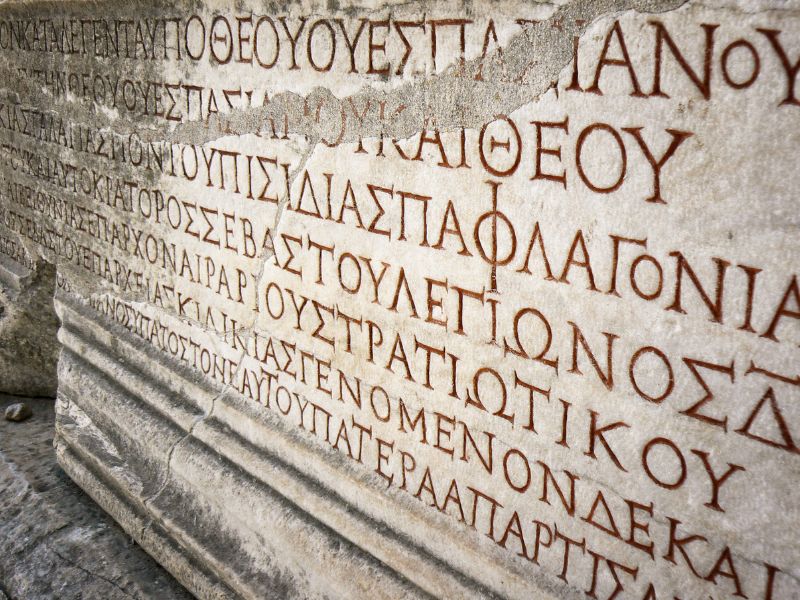
The Library of Celsus, an architectural marvel of its time, experienced a series of unfortunate events leading to its decline. Initially, in 262 CE, it suffered immense damage due to a fire ignited during a Gothic invasion. Despite this devastation, the library’s façade remarkably survived, and subsequent repairs were undertaken in the late-4th century CE.
Enhancements included the addition of a small fountain next to the front steps, contributing to the library’s aesthetic and historical significance. Ephesus, the city that housed this iconic structure, retained its importance within the Christian world throughout Late Antiquity.
It played a pivotal role in Christian history, hosting the significant ecumenical council of bishops in 431 CE and witnessing the construction of a new, grand basilica in the mid-6th century CE. However, the library’s façade eventually succumbed to another catastrophe, collapsing due to an earthquake in the 10th century CE.
The enduring legacy of the Library of Celsus was brought to light once again when it was excavated in 1904 CE. The sarcophagus of Celsus was discovered, and the façade was painstakingly reassembled and partially restored, reviving the grandeur of the library’s original design.
The great statues that once adorned the façade, now replaced by faithful copies, were transported to Vienna following their discovery, adding another layer to the library’s rich history.
Restoration and Preservation Efforts
The restoration of the Library of Celsus stands as one of the notable achievements in the field of archaeological preservation. In 1904, Austrian archaeologists unearthed the remarkable sarcophagus of Celsus during the library’s excavation, marking a significant milestone in Ephesus’s historical narrative.
Following this discovery, the library’s facade was meticulously reassembled and underwent partial restoration. The magnificent statues that originally graced the facade were transported to Vienna, with faithful replicas now adorning the structure in their place.
Over the centuries, the Celsus Library had suffered immense damage from a series of natural and human-induced disasters including earthquakes, fires, and invasions.
Despite this destruction, the ruins of this architectural marvel continued to inspire awe. In the 1970s, an ambitious restoration project was launched with the aim of preserving the remnants of the library and recreating its erstwhile grandeur.
Skilled archaeologists and craftsmen undertook the meticulous task of reconstructing the facade, employing original fragments and traditional techniques to ensure historical accuracy.
Today, the restored Celsus Library stands as a captivating reminder of the past, drawing visitors from around the globe. Its restored facade does not only exhibit the architectural brilliance of the Roman era but also serves as a testament to the dedication and precision of modern restoration efforts.
The preservation of the library underscores the importance of maintaining our cultural heritage, allowing future generations to appreciate the wonders of ancient civilizations.
Can We Visit the Library of Celsus Today?
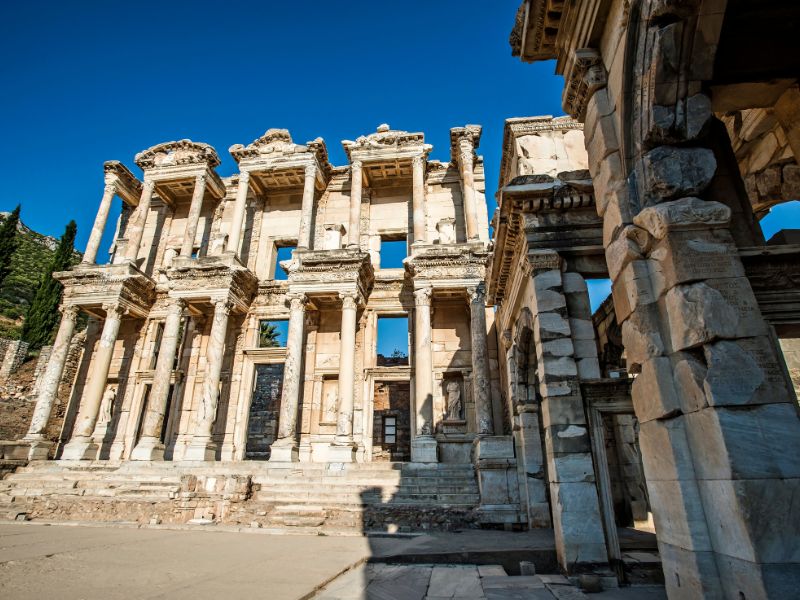
The Library of Celsus is accessible to visitors today and remains one of the most iconic attractions in Ephesus, Turkey. The site has been meticulously preserved and partially restored to reflect its ancient grandeur.
Tourists from around the world flock to this archaeological treasure to marvel at its impressive facade, which has been reassembled using original materials and faithful replicas of statues. As part of the larger Ephesus Archaeological Site, the Library of Celsus offers a glimpse into the rich history and architectural prowess of Roman civilization.
Visitors can walk through its ancient corridors, explore the surrounding ruins, and immerse themselves in the cultural and intellectual spirit that once defined this remarkable library. Guided tours are available, providing insightful commentary on the library’s history, significance, and the meticulous efforts undertaken to preserve its legacy.
Conclusion
The legacy of the Library of Celsus endures as a symbol of the ancient world’s commitment to knowledge, culture, and architectural excellence. Its impressive design, historical significance, and the story of its preservation offer valuable insights into the sophistication of Roman engineering and the cultural importance of Ephesus.

